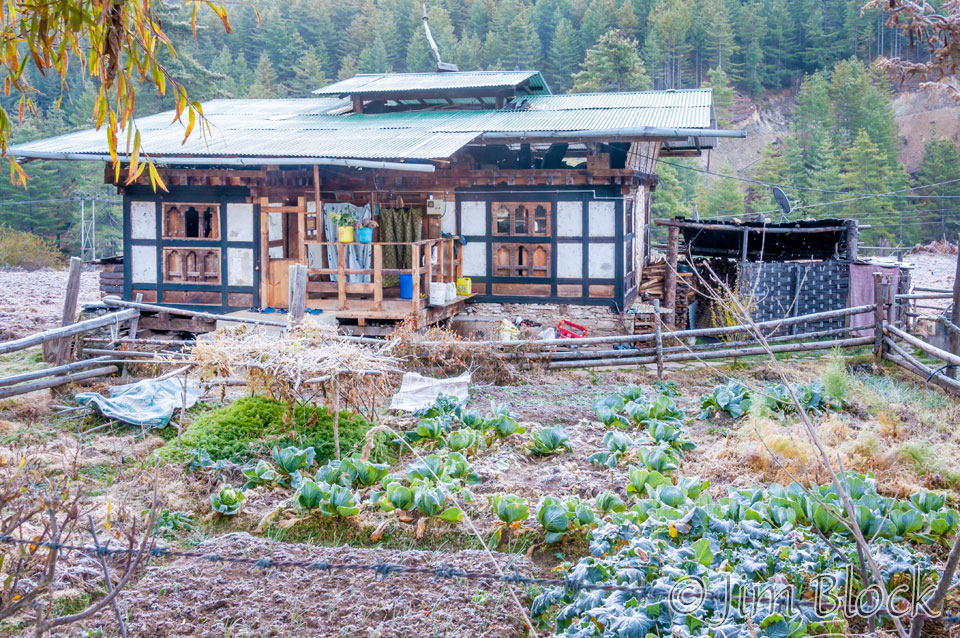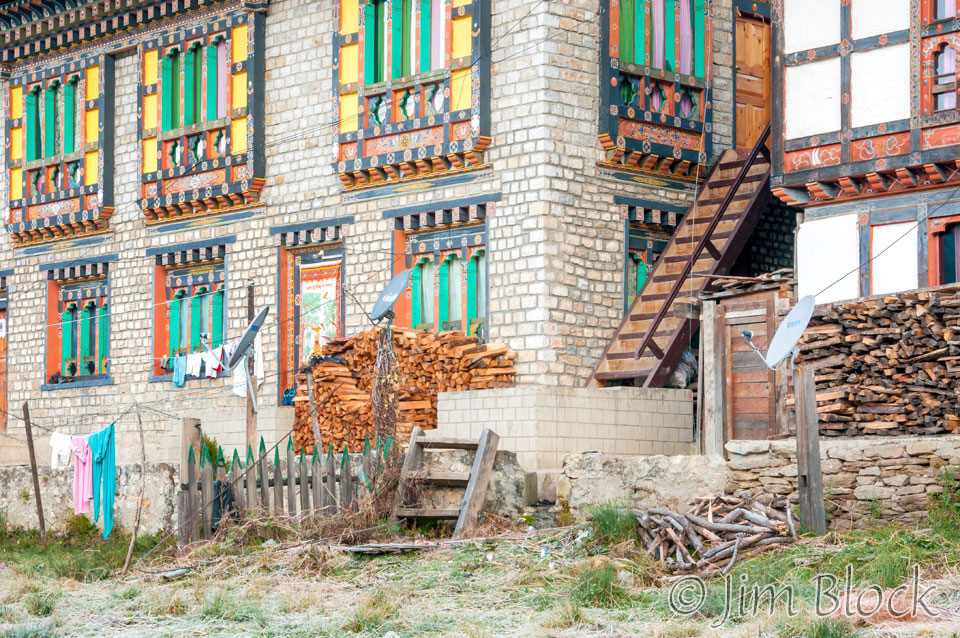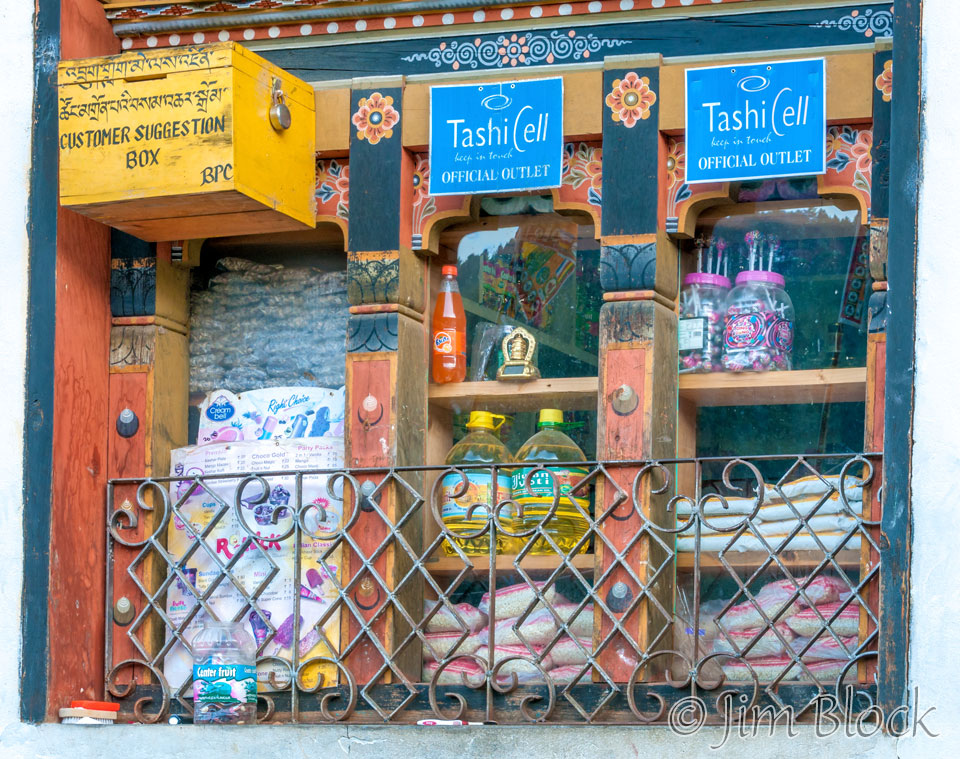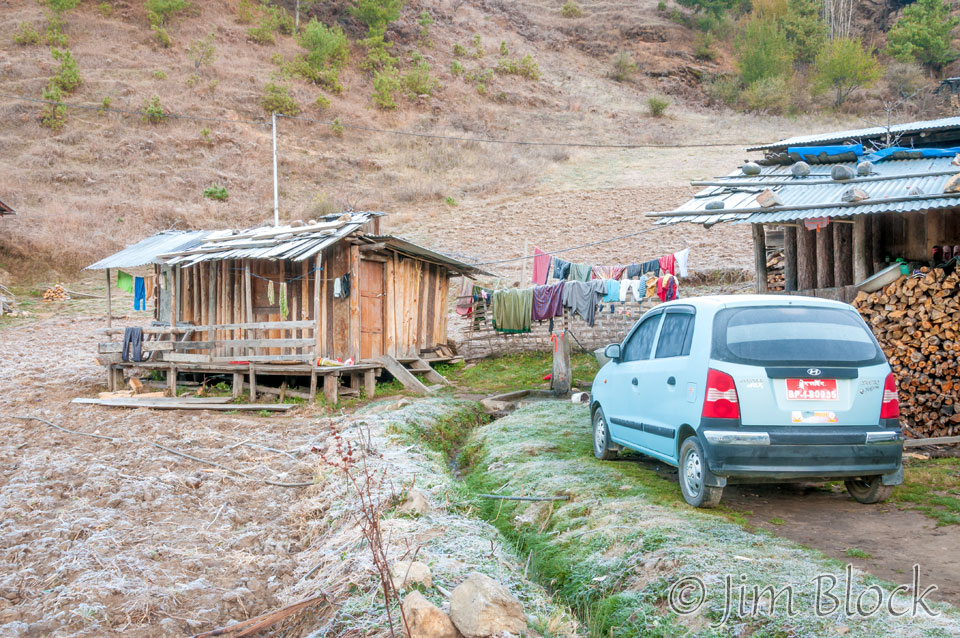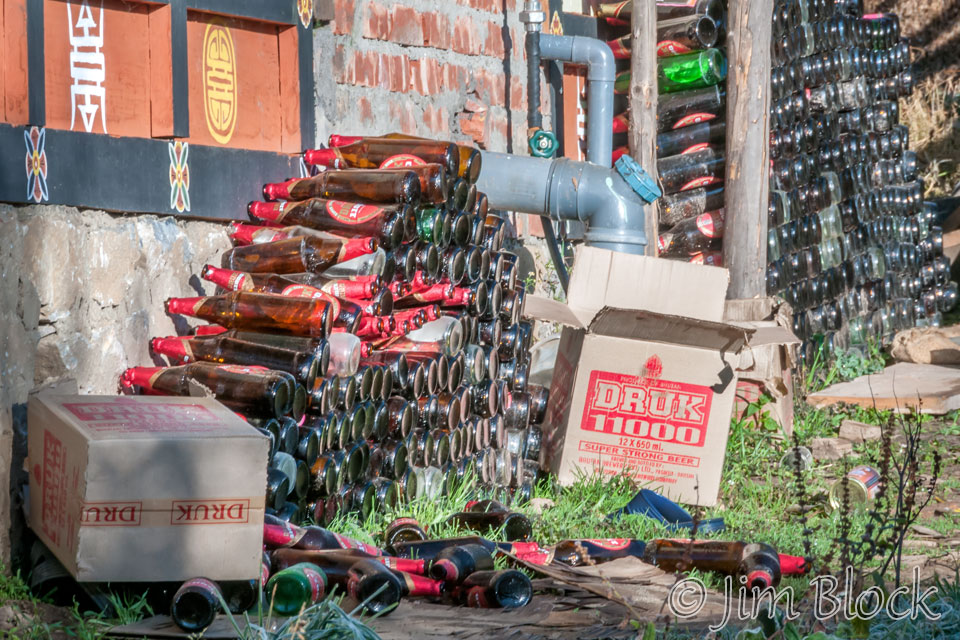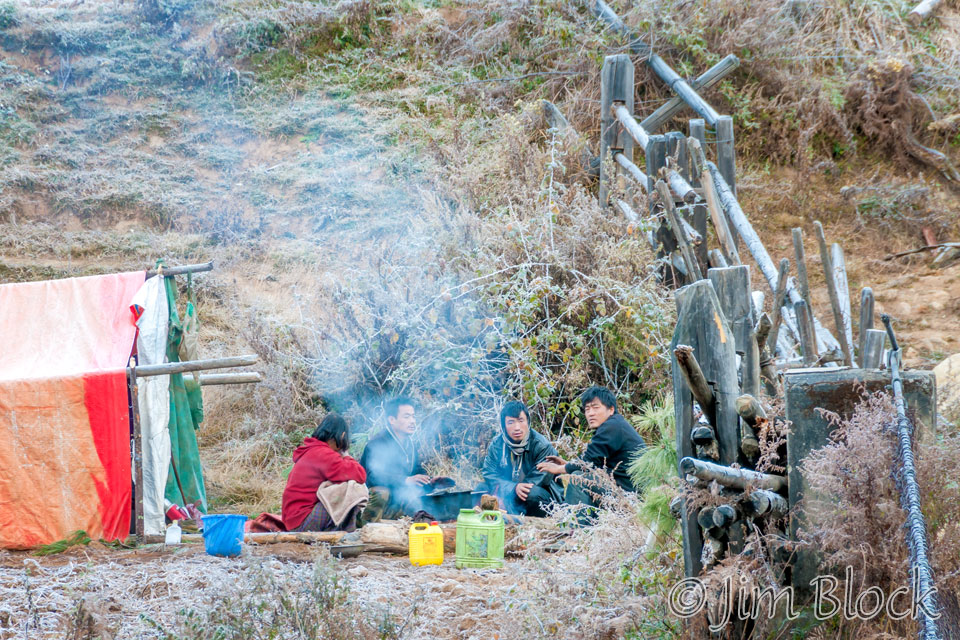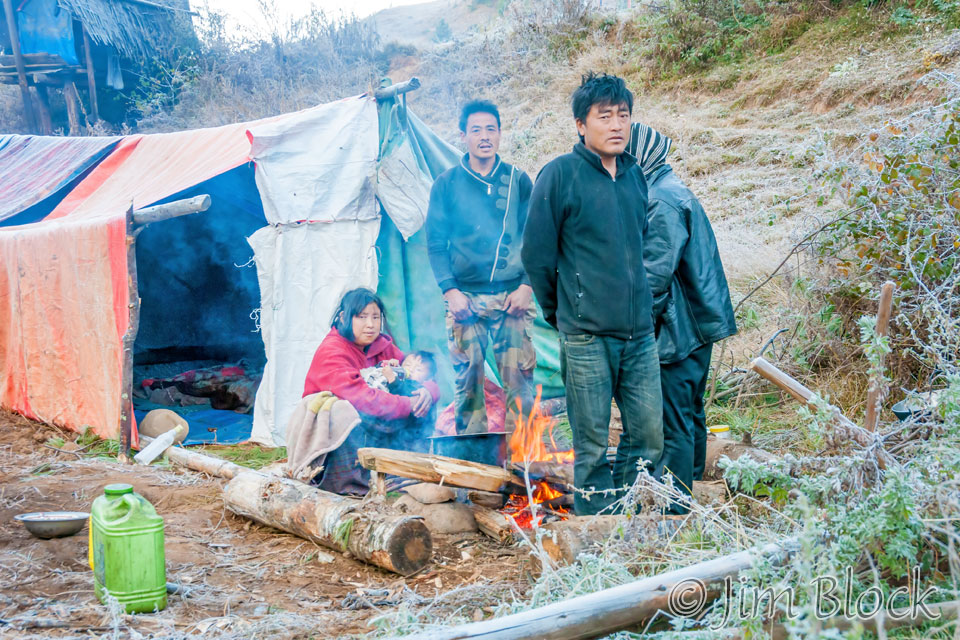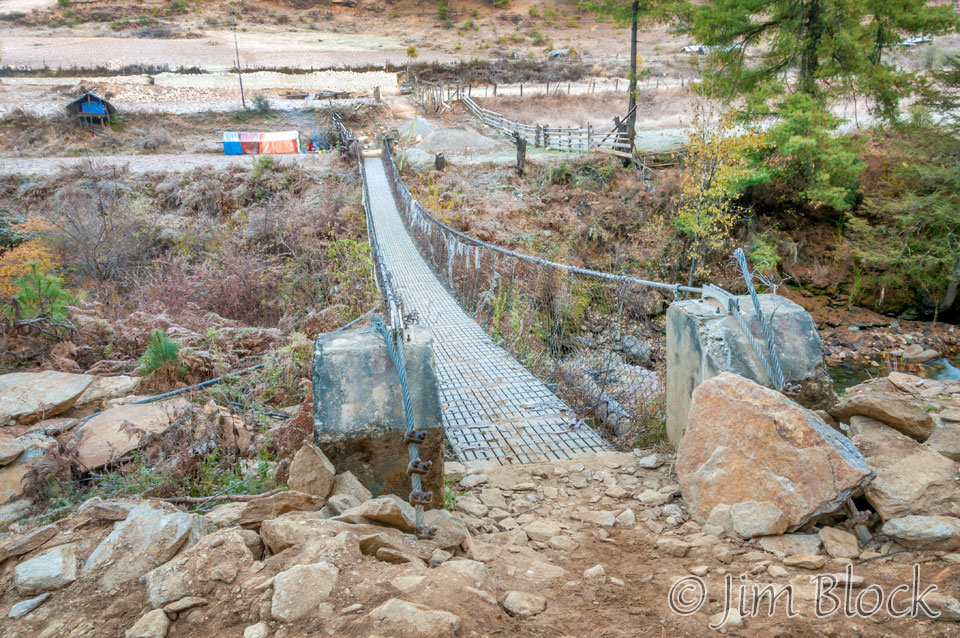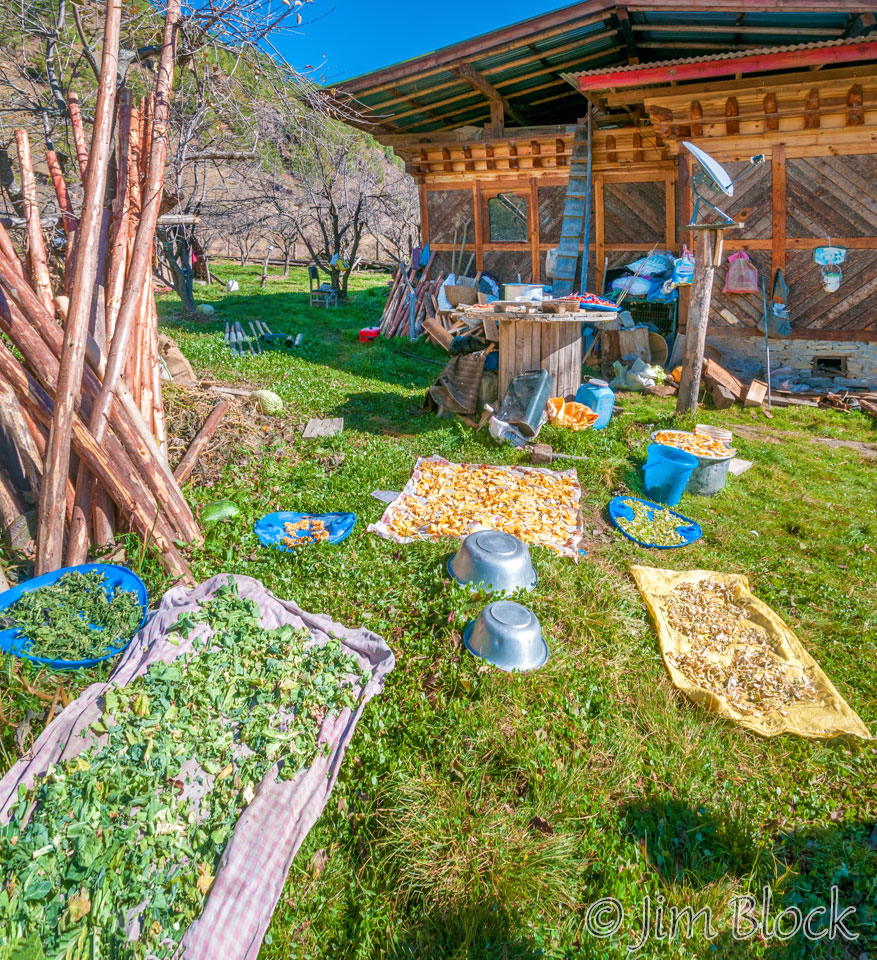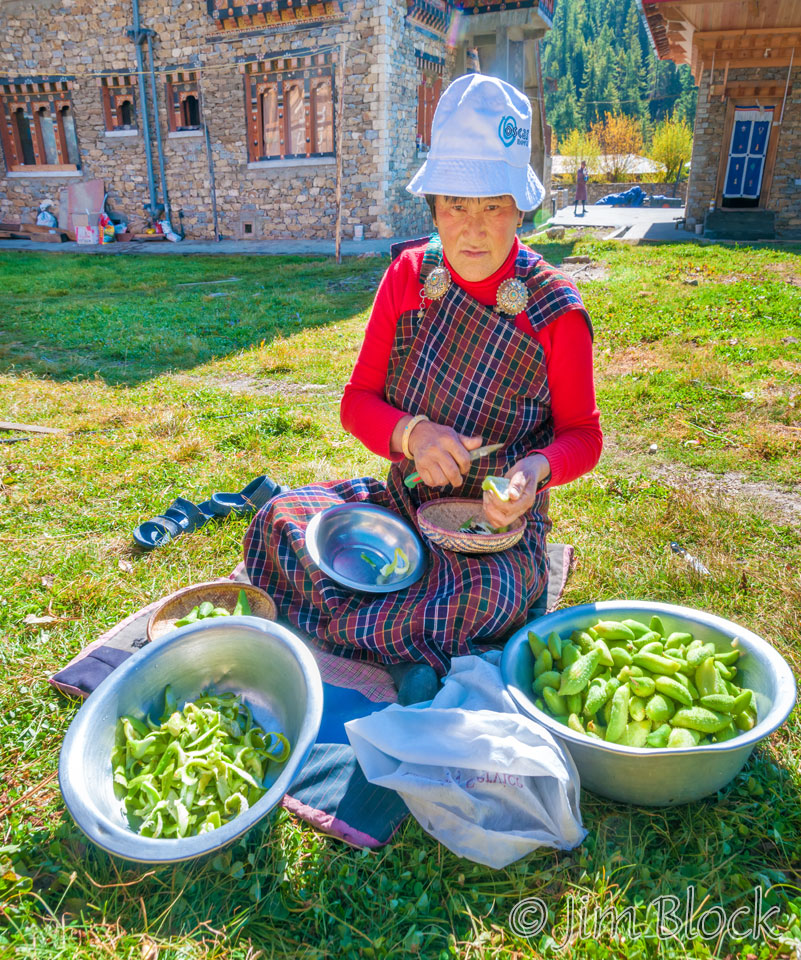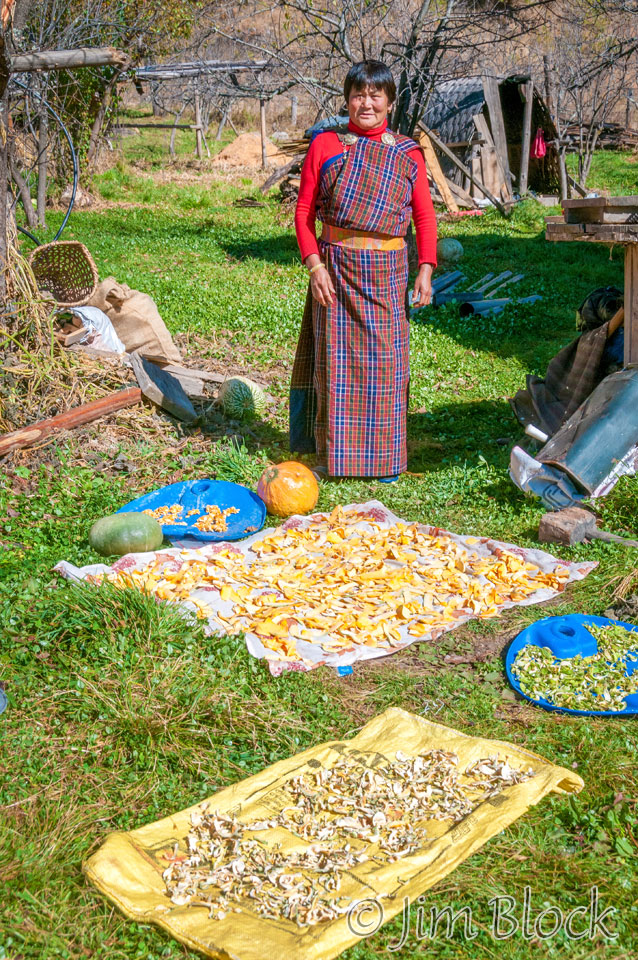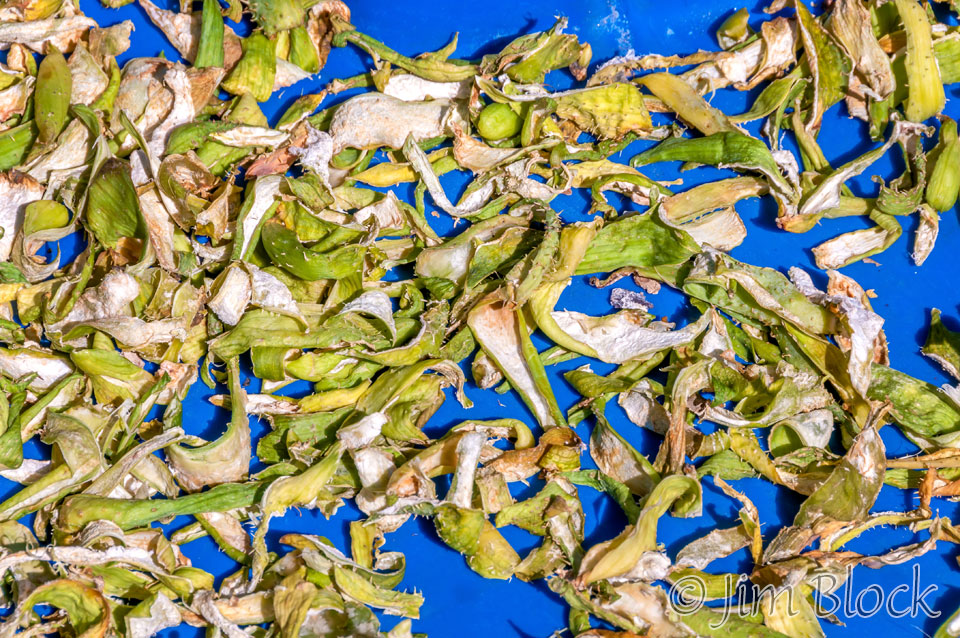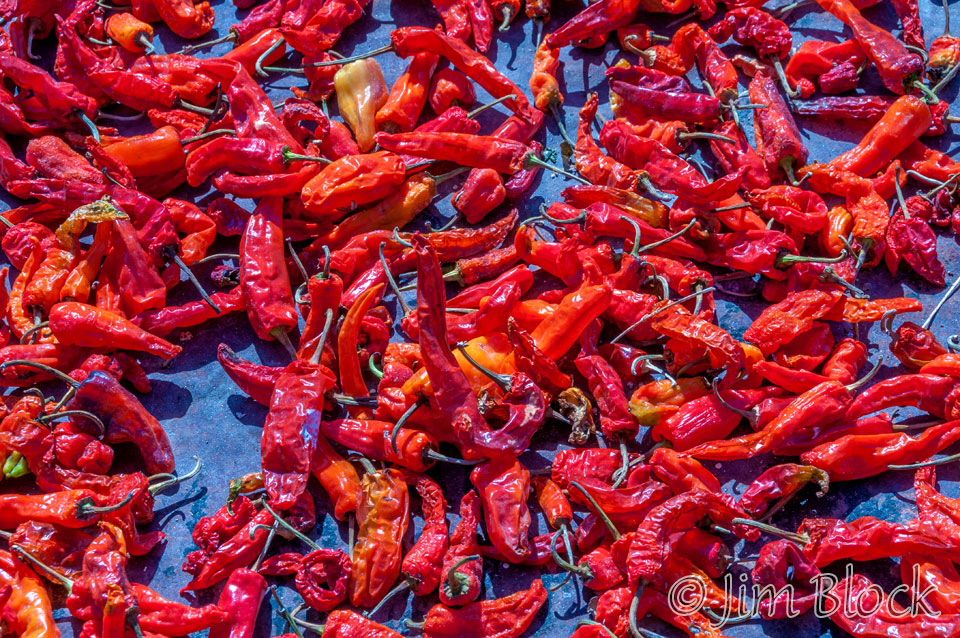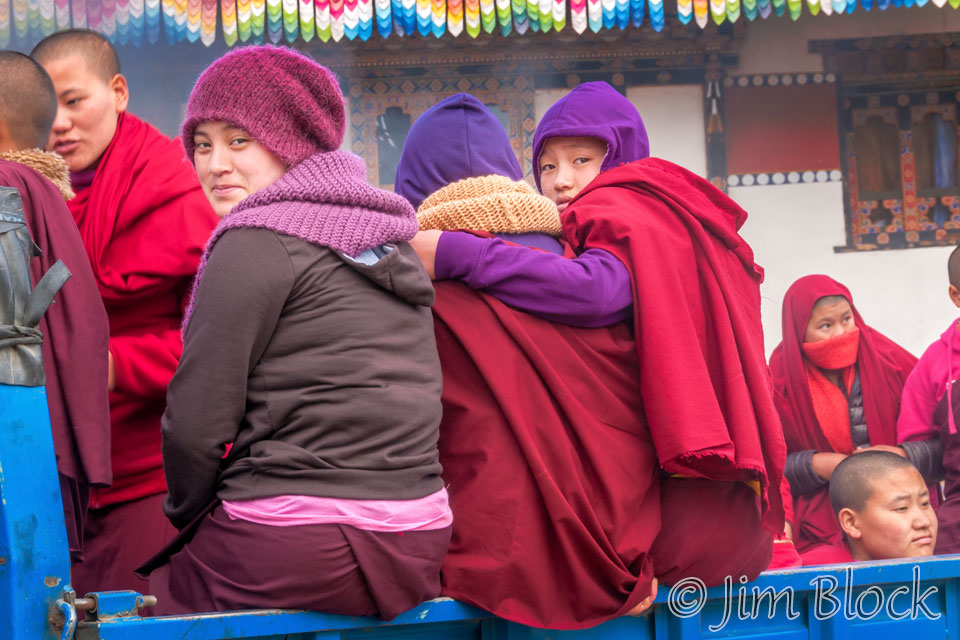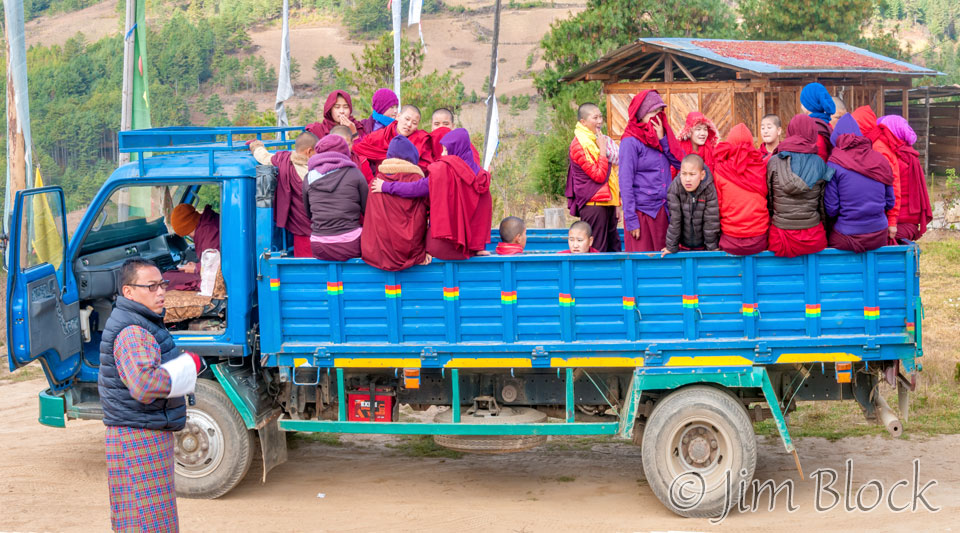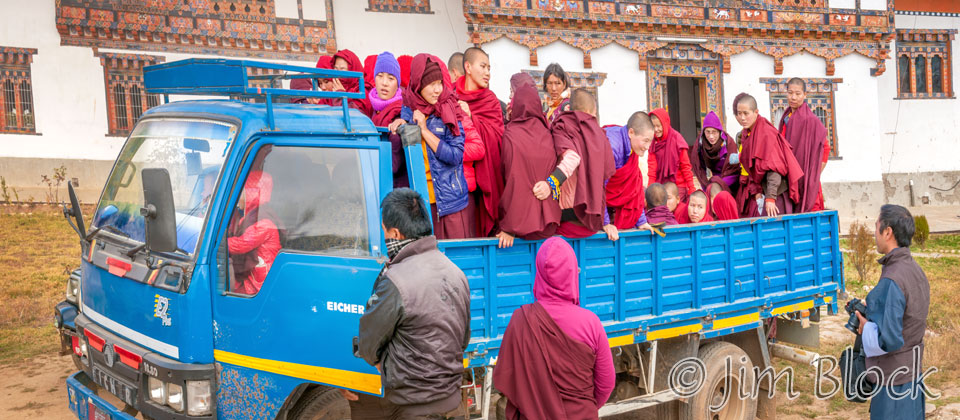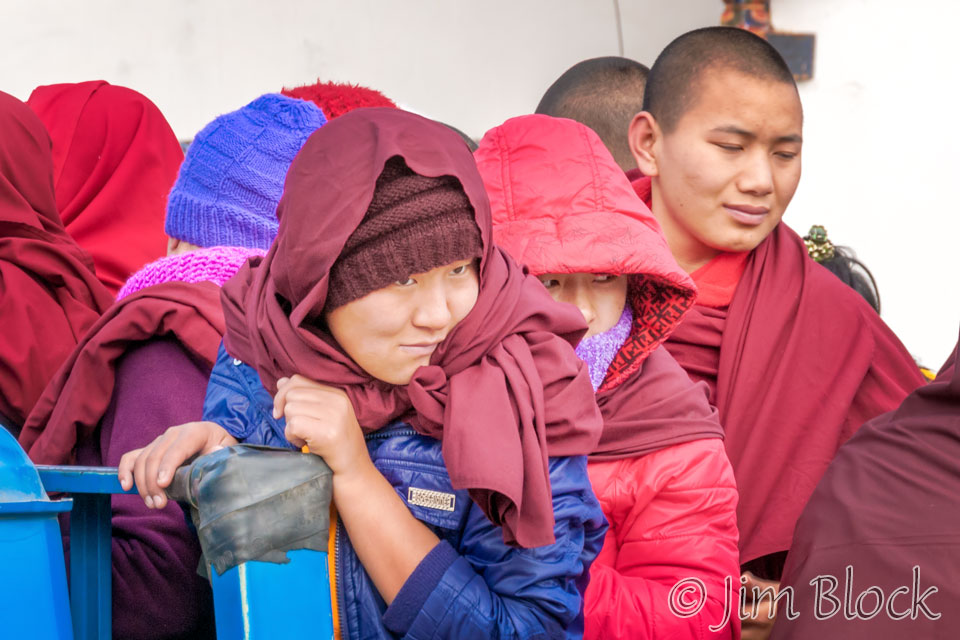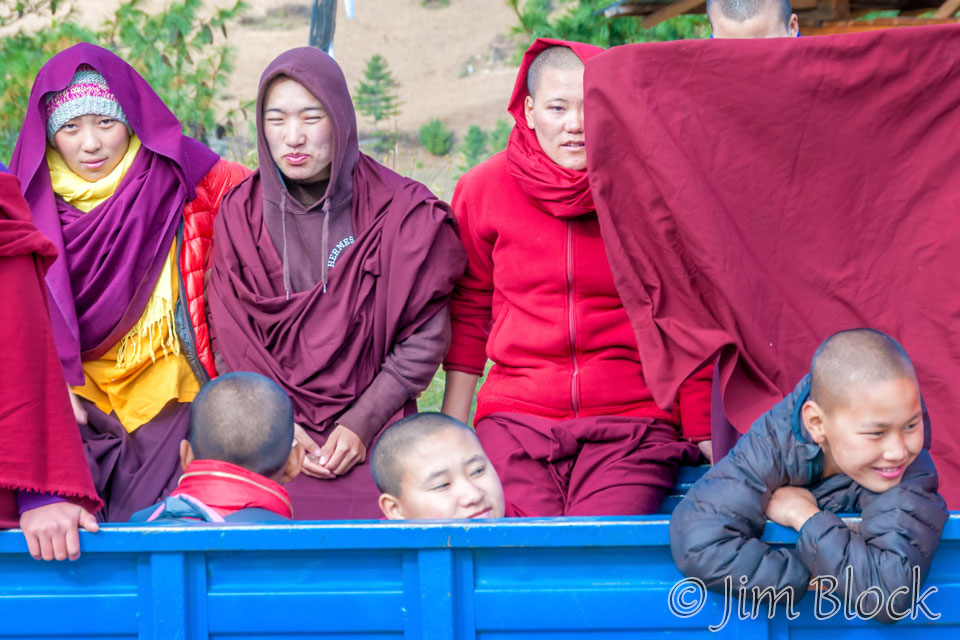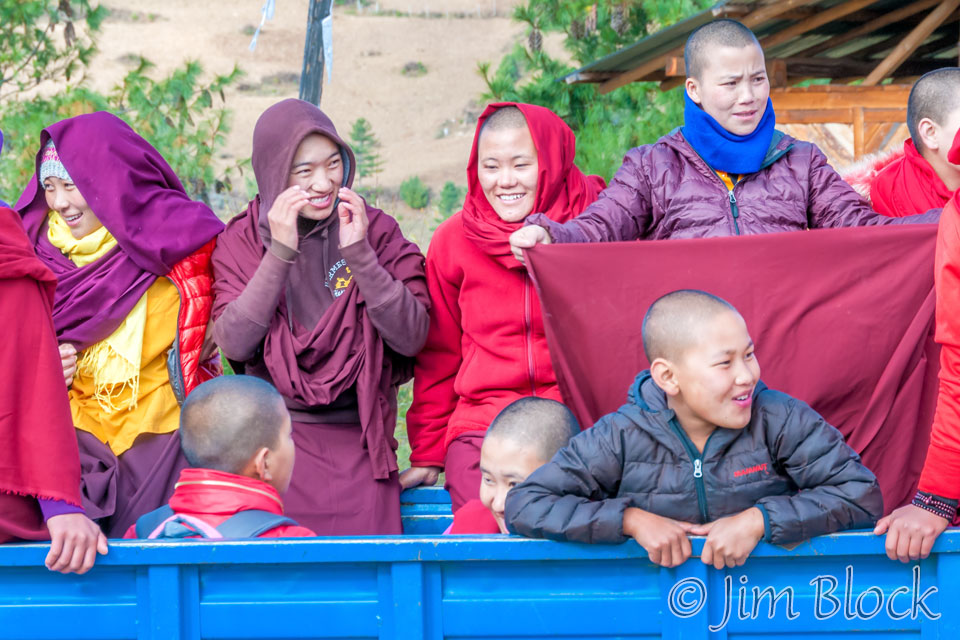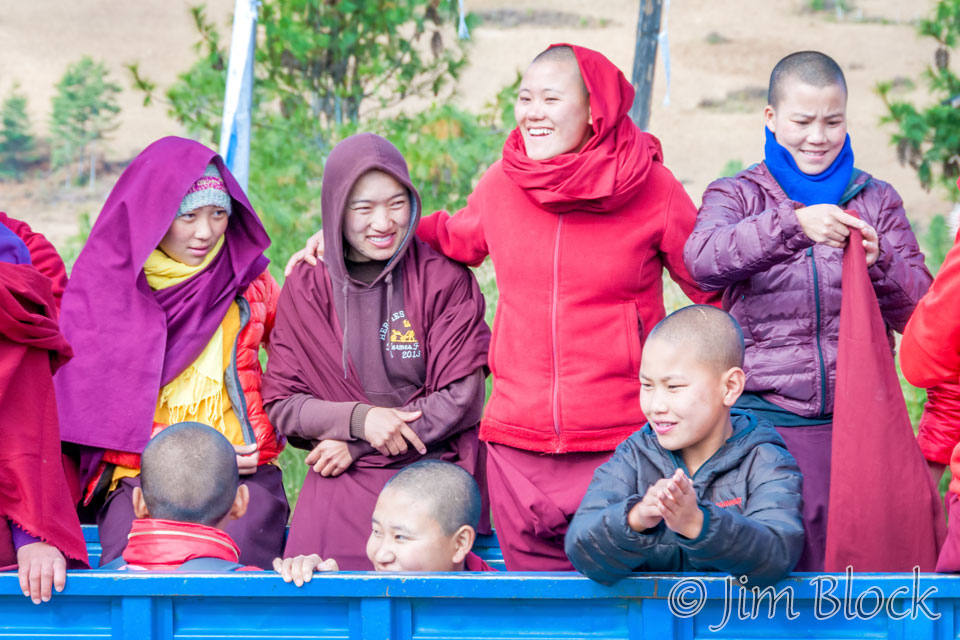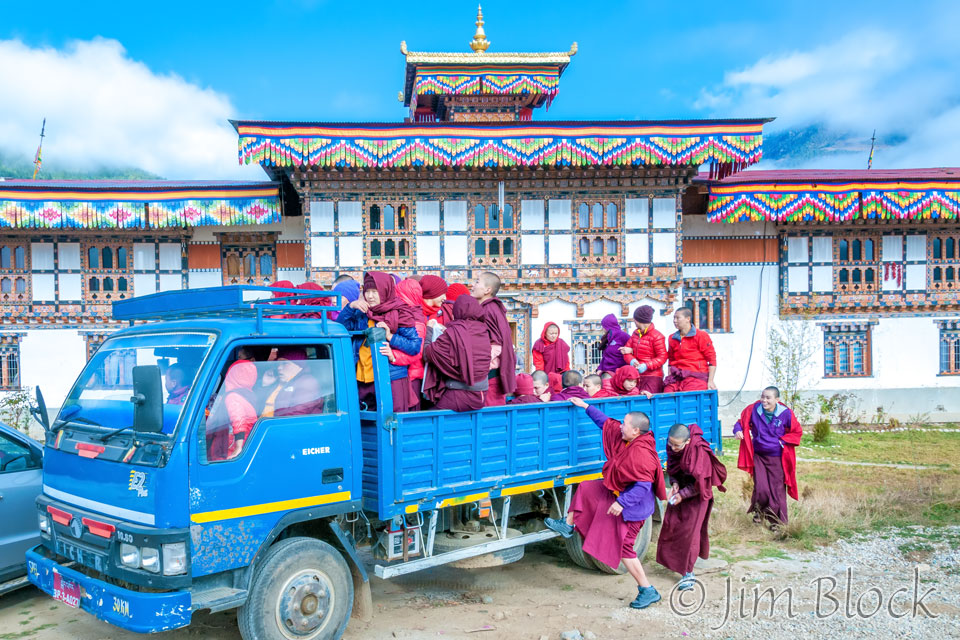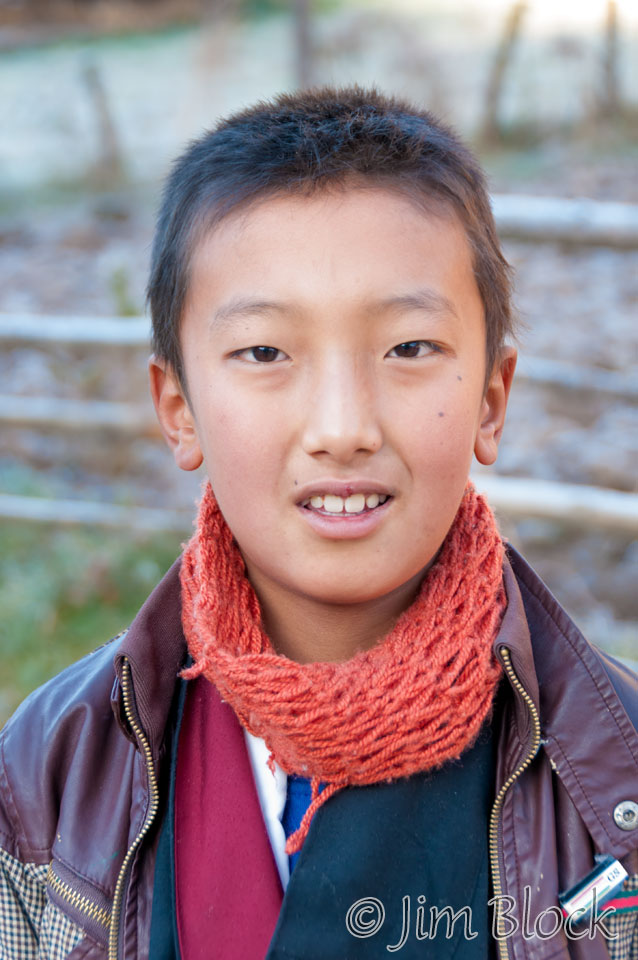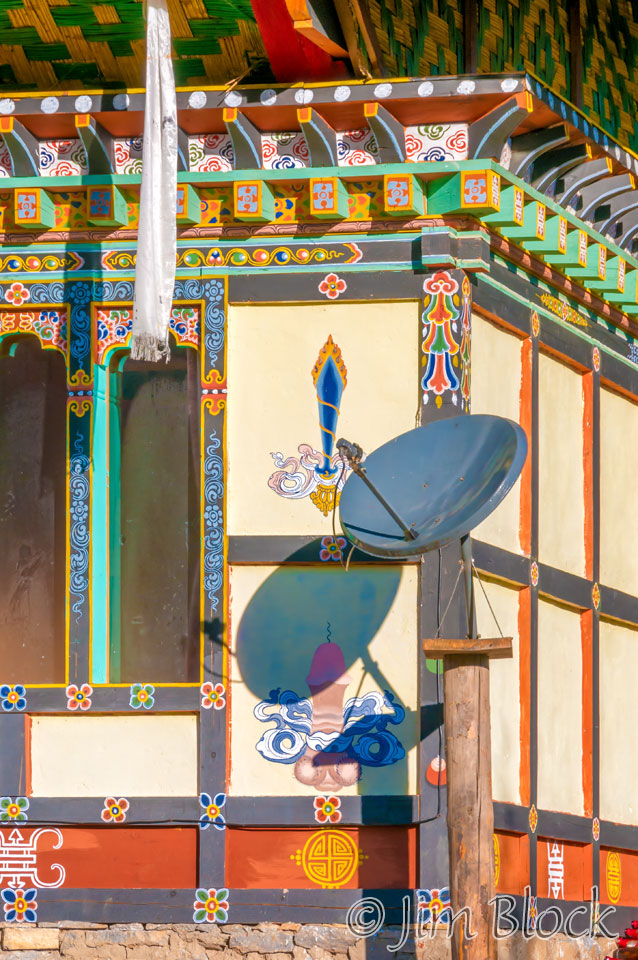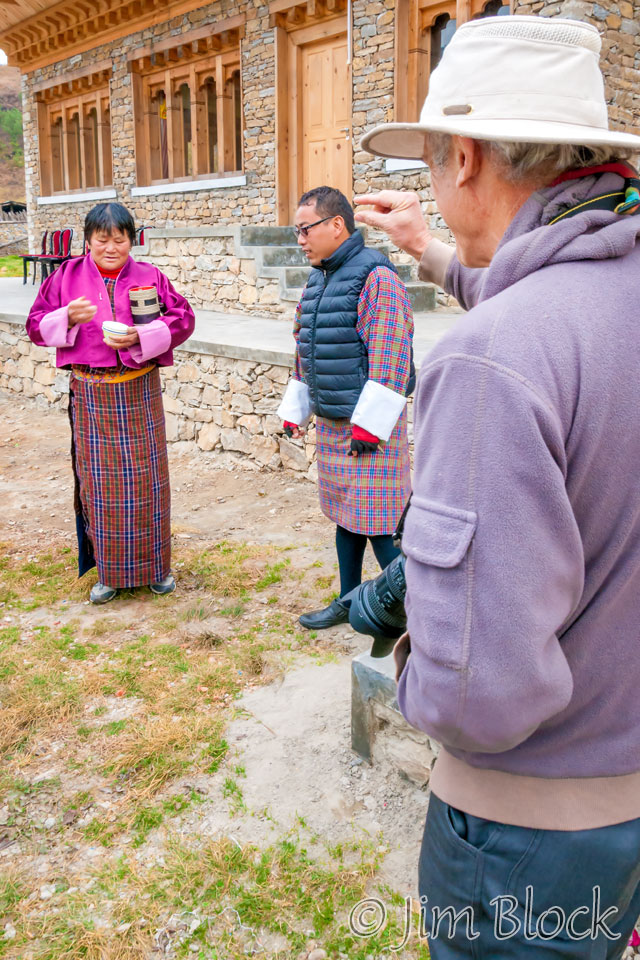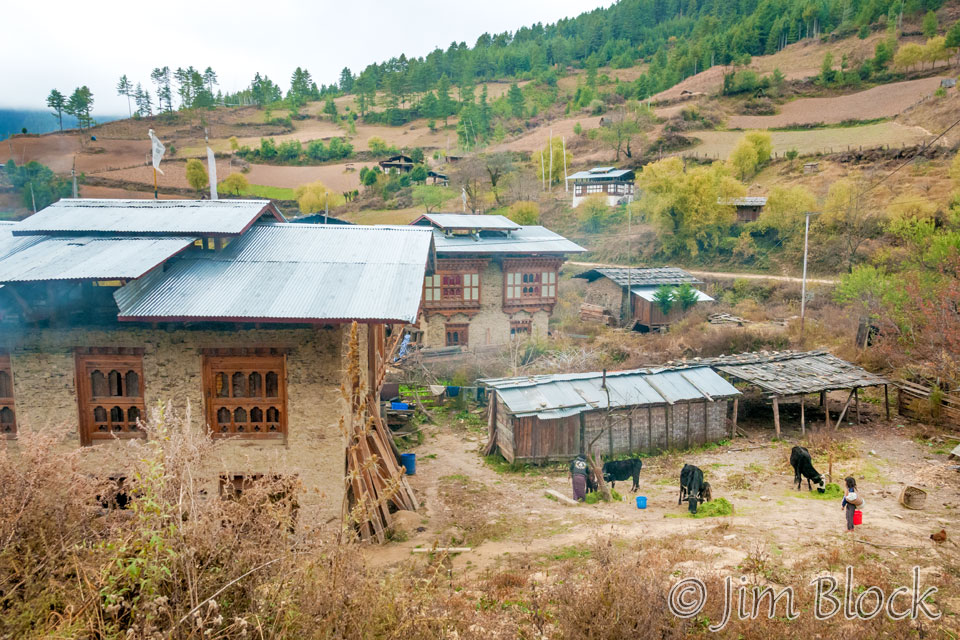I’m not sure where the Tang Valley officially starts, but we visited it several times. The first was a tour of the Burning Lake, which is actually just a wide part of the Tang River. Below is the Tang River along our walk to the Burning Lake. I crossed this bridge 5 times. Beyond it is Phondrong and Ura.
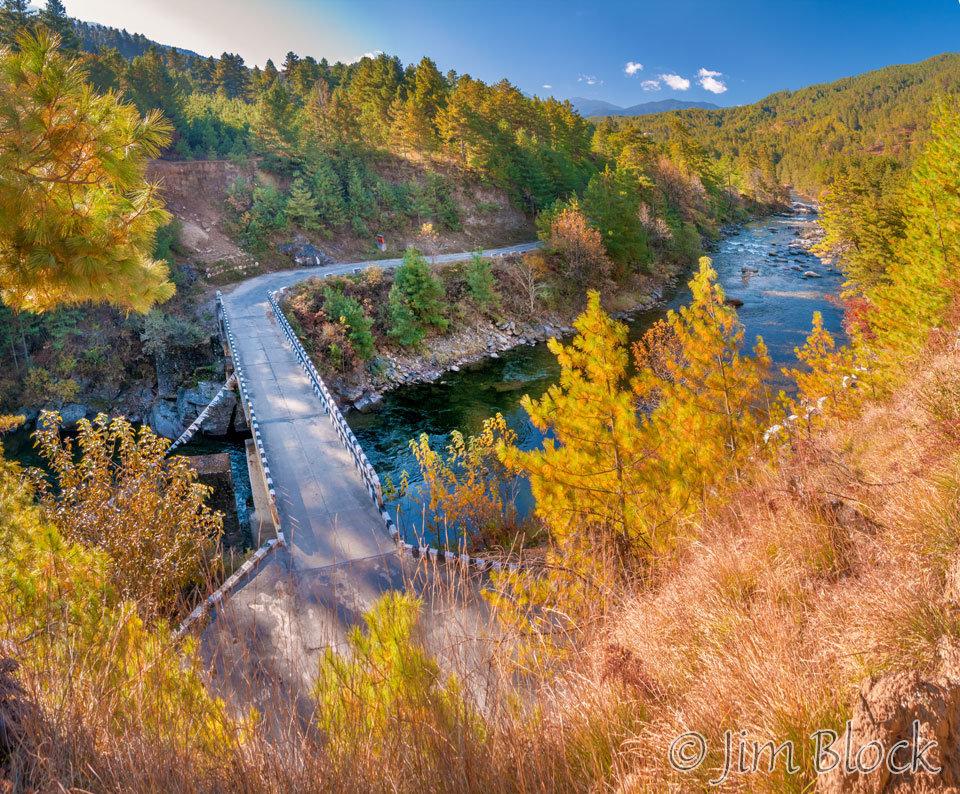
We hiked to the Membartsho, the Burning Lake, the long way. We could have parked much closer, but the walk was great conditioning for a very long slog two days later. This is the view as we approached the Burning Lake.
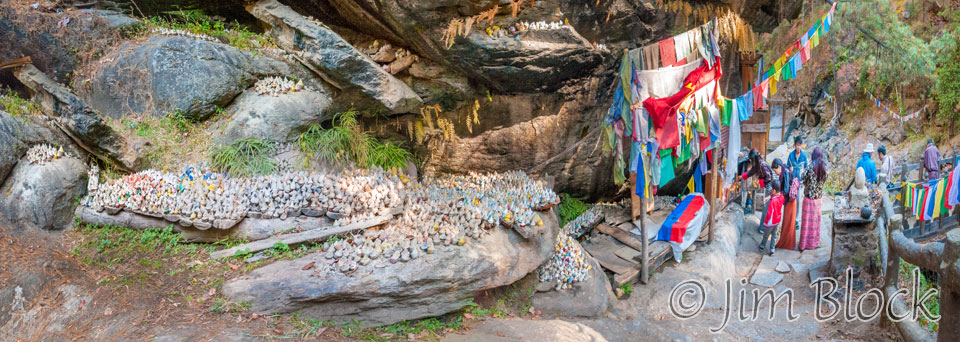
I’ll spare you the full story of this spot. It is something about a Tibetan Buddhist saint, Pema Lingpa, diving into the river with a burning butter lamp, disappearing into the bottom of the gorge, and emerging with a statue the size of a fist and a treasure casket tucked under one arm, and the butter lamp still burning in the other. You can Google it if interested.
Here is a view of the Burning “Lake”.
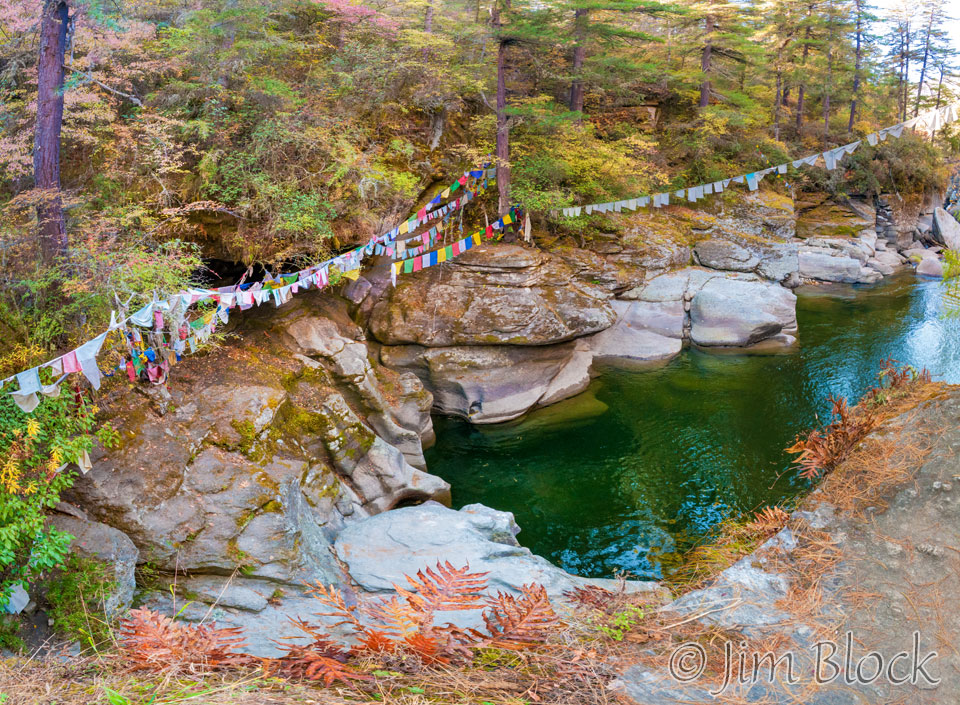
The evening before our visit to the Burning Lake I attended a wonderful puja at Kencho’s Uncle’s house in nearby Phomdrong. Still in the early morning after visiting the Burning Lake we spent several wonderful hours visiting Kencho’s village of Phomdrong. This was one of the high points of our trip.
That afternoon we toured a massive Dzong and several temples in Jakar. They were a wonderful experience, but we seemed to really like visiting and interacting with local people in Phondrong and at Dr. Kharma’s Farmhouse in Ura, which we drove to the next day.
From Ura we hiked for a long 10 hours over several high passes to the charming village of Tang, in, of course, the Tang Valley. There we visited the Tang School and the wonderful Ogyen Choling museum.
We stayed at the new and charming River Lodge in Tang.
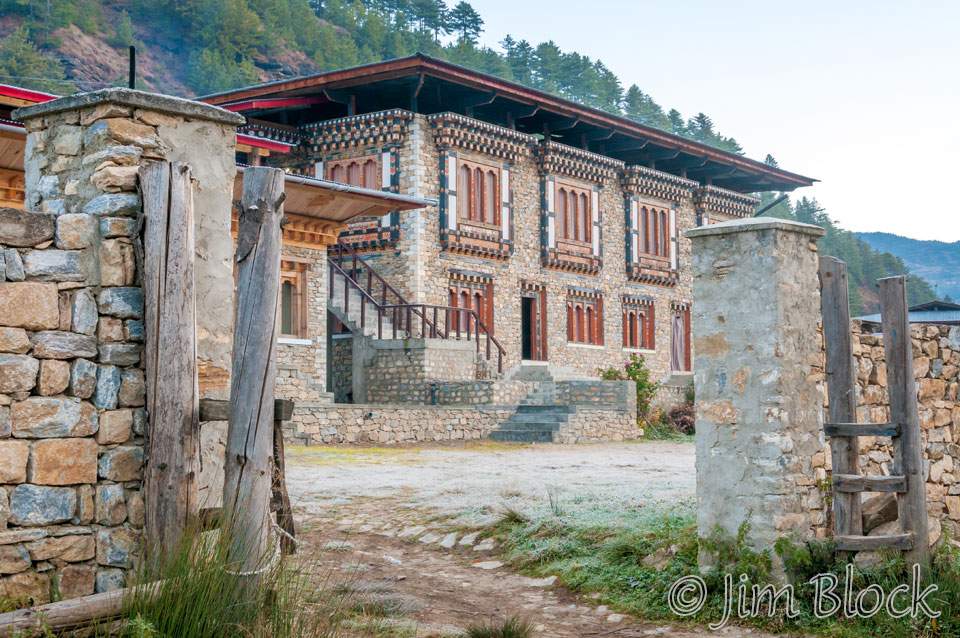
Before breakfast at the River Lodge I took a walking tour of Tang Village. Here are a few photos I took.
I walked down to the bridge we crossed after our long trek the day before. I found a group of Indian workers who were building a car bridge and were camped there while doing so. Here are the photos of them, the old bridge, and some steel for the new one.
We had an excellent breakfast in the River Lodge consisting of mango juice, buckwheat pancakes, toast, and eggs. The only negative, which we found true in almost all of Bhutan and Nepal — INSTANT COFFEE. One would think getting real beans would not be that hard or expensive. HINT, HINT. I made a “creative” photo of the table flowers with my iPhone.
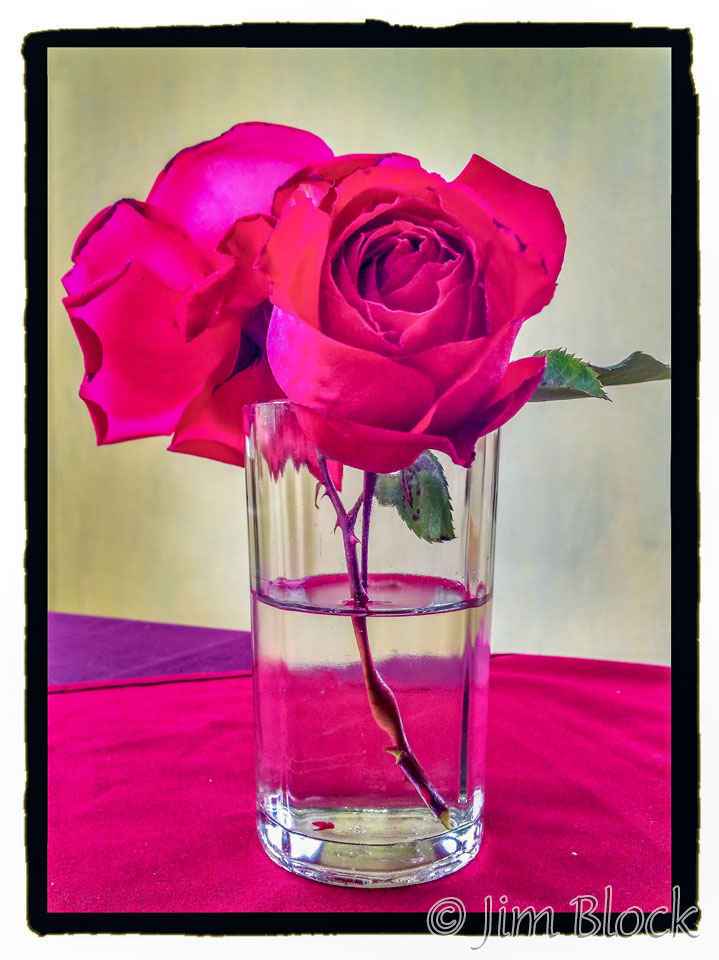
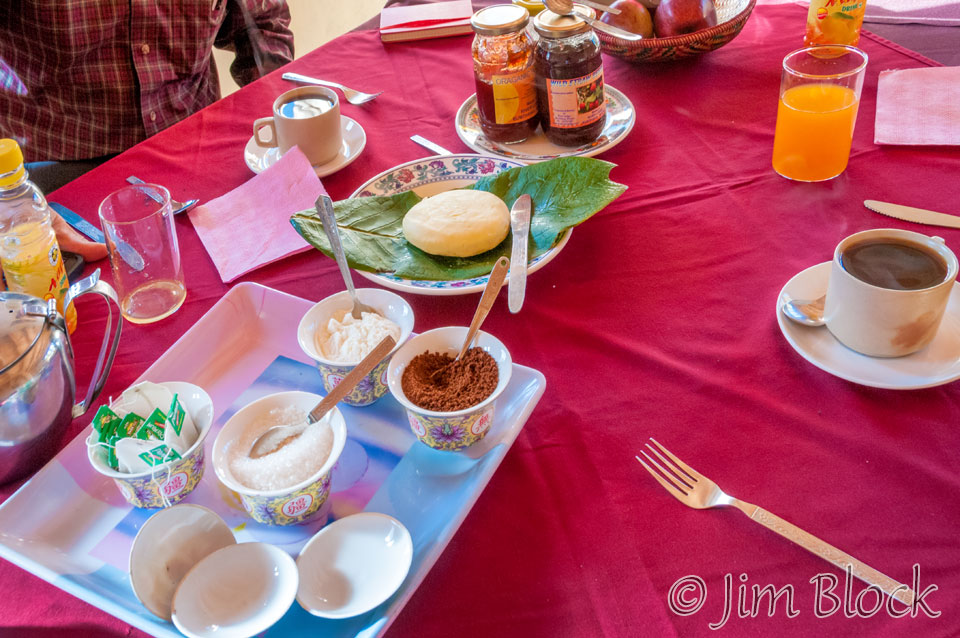
From our room window we could see two woman out back laying out fruits and vegetables to dry in the sun. So we wandered out back and chatted with them, though we spoke different languages.
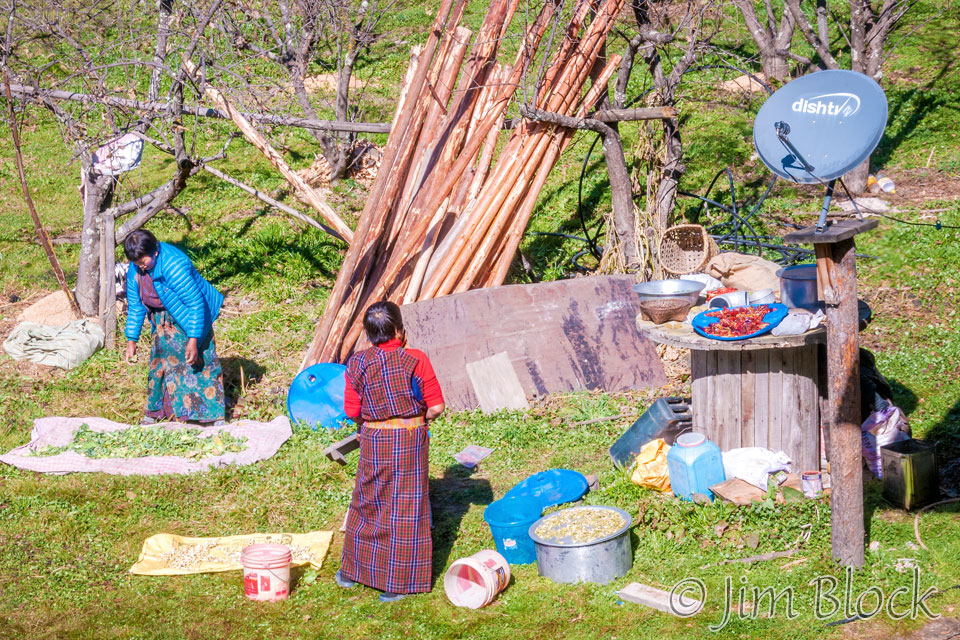
Here are some of the photos I took of the fruit, veggies, and the women.
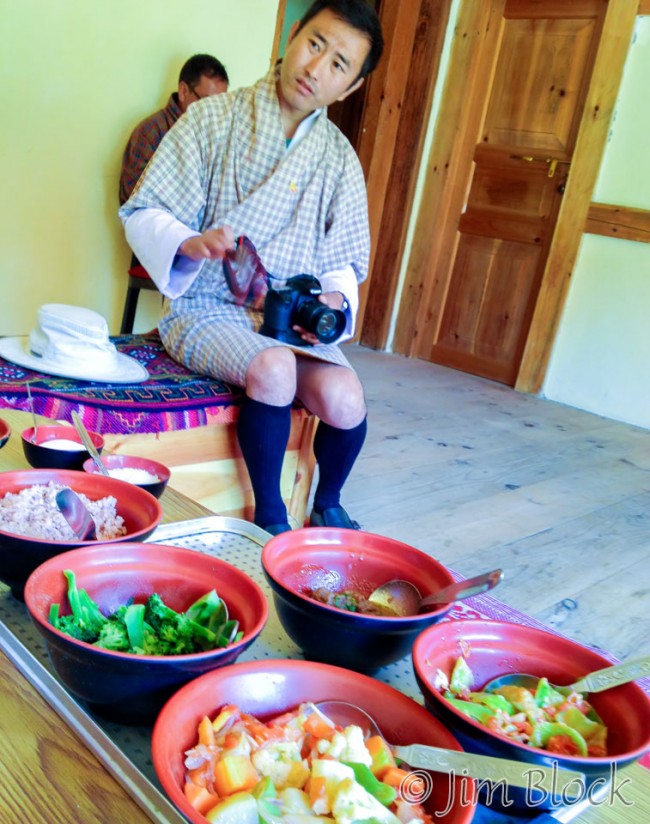
We spent the morning at the Tang School which was very close to our lodge. It was an unplanned and wonderful experience. After visiting the school we returned to the lodge to find a group of 35 tourists (I hate seeing tourists when I am on vacation), at the lodge for lunch. So Lakey arranged lunch in a private room away from the crowd. On the right is an iPhone photo of Lakey and a part of our lunch.
After lunch we drove up the road and toured the fantastic private Ogyen Choling Museum. This was a wonderful place. Not the least of its virtues was that photography was permitted, unlike the temples and public museums throughout Bhutan.
We had a good second night at the River Lodge, had breakfast, and met Lakey and Kencho around 7:30 am. But before we could leave our hosts had to send us off with the customary cup of ara. Since it was early in the day Stephen gestured to only have a tiny bit (see slide show). I did not want to insult our hostess so I had a normal sized portion. They never offer any to drivers, so Kencho only got to hold a cup and then pass it along.
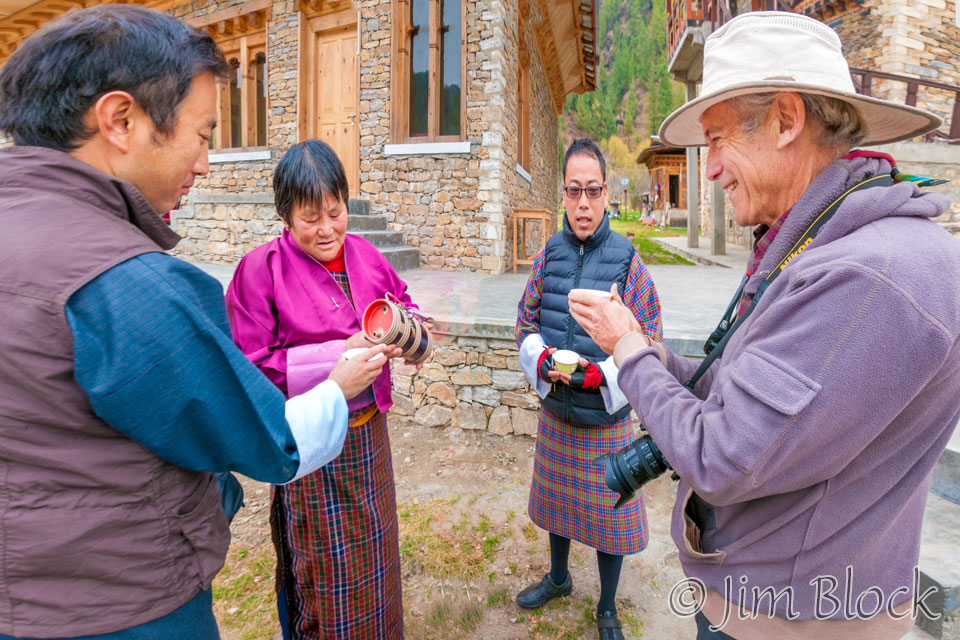
We departed a bit before 8 am heading toward Jakar where we had been 4 nights earlier. As we drove out of the village I photographed a traditional home with peppers drying on the roof outside the open-air top floor and a massive wood pile outside. When we reached a chorten along the road it has an extra lane to the side so that all cars could drive on the left of it as is the Buddhist custom.
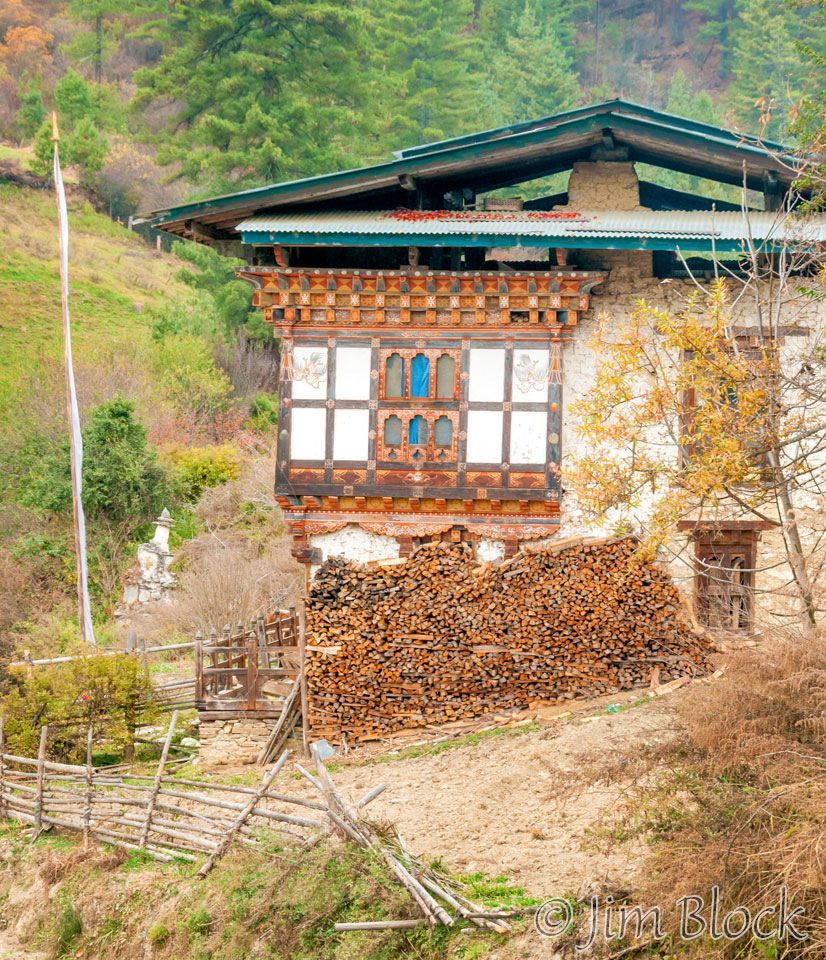
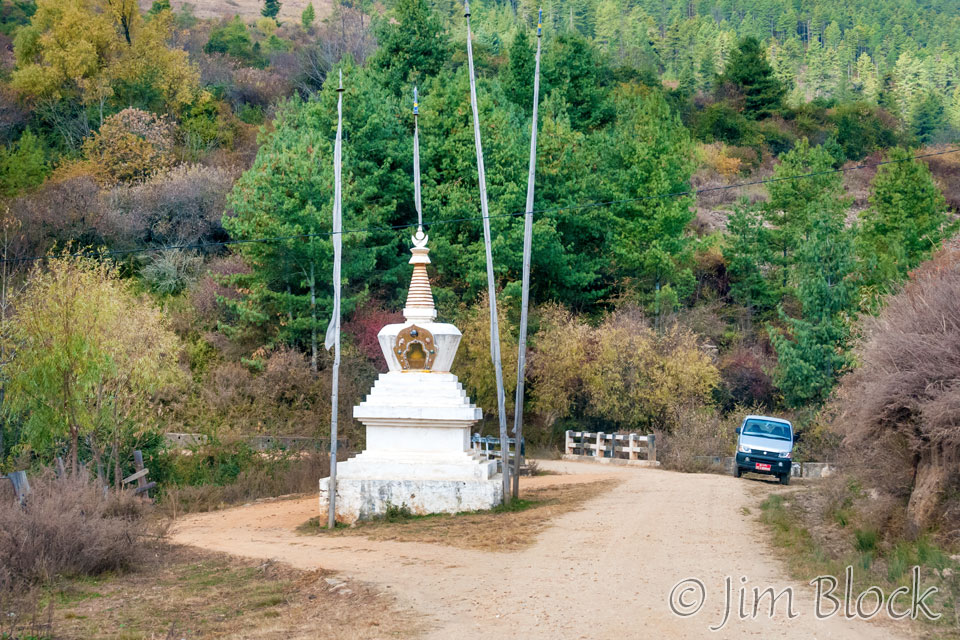
We arrived at the Kunzangdrak Geomba (nunnery) just in time to see the nuns climbing into two trucks for a trip to the Jambay Lhakhang Festival in Jakar that we would also visit in a few hours.

This gave my a chance to quickly take a number of photos over the 5 minutes from when we arrived until they departed.
After the nuns left we took a brief tour of the nunnery. It was dramatically different than those we had visited in Nepal. This one had almost elegant nun’s rooms. It is nice to have a very wealthy benefactor.
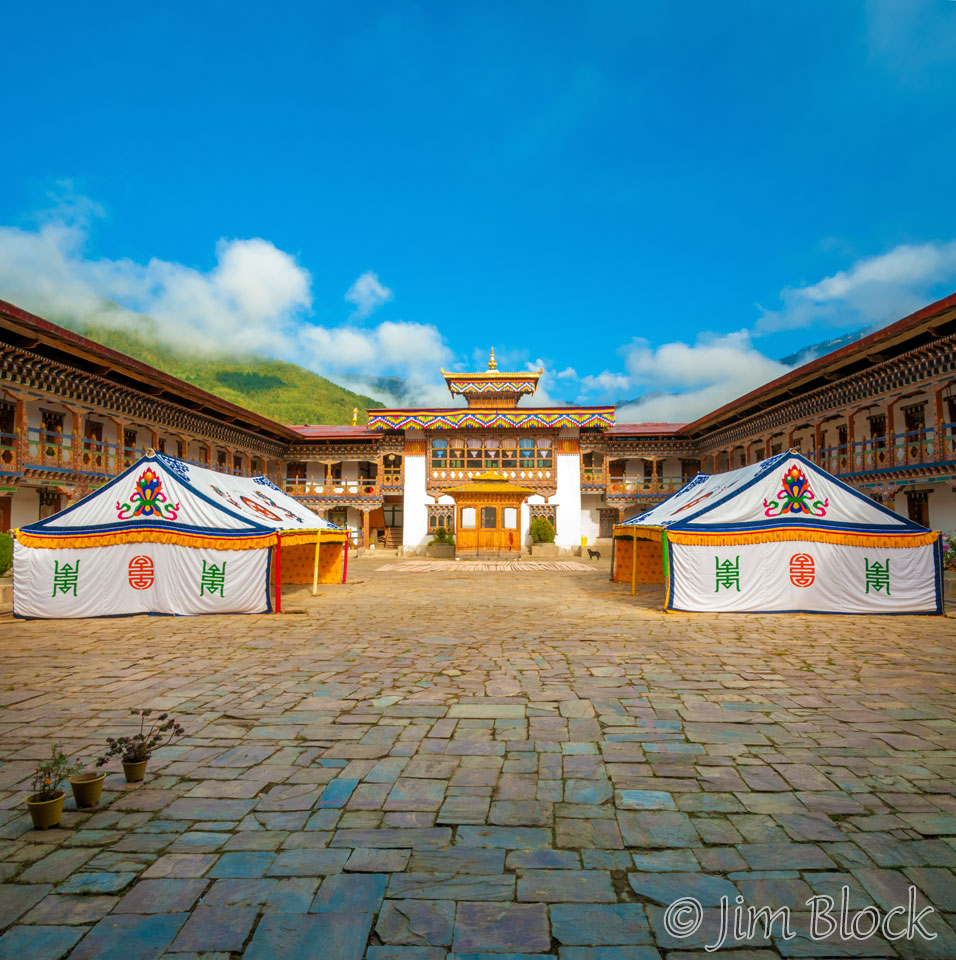
We headed down to Jakar and made an unplanned stop at the Jambay Lhakhang Festival.
Here are a few more photos from the Jakar Valley.

